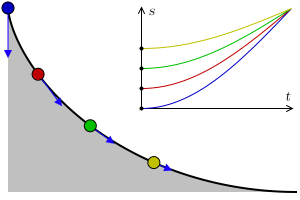Hello and welcome to the 199th Carnival of Mathematics – a monthly roundup of math-y posts from around the internet. This is my first time hosting it, and I’m really excited!
As per tradition, we’ll start by talking a bit about the number 199.
- For starters, 199 is a prime number! It’s reverse, 991, is also a prime. And, the sum of its digits, 19, is also a prime! How cool is that!
- Talking about primes, 199 can be expressed as the sum of three as well as five consecutive primes. Can you find these primes?
- Finally, 199 is a centered triangular number. That is, it can be represented using layers of triangles formed using dots, plus a dot at the center. Here’s 199, it all its glory.

Some more interesting facts about 199 can be found here and here. Now, to the posts.
Newton’s Fractals
I’ll start off with a video about the black-magical link between Newton’s method of approximating roots of a polynomial and… fractals! Whoa!
Check out the amazing video here, by Grant Sanderson.
As a bonus, here’s a tweet posted by him – a visual proof of why 11 + 2 = 12 + 1 (ahem).
Triangular Lissajous Curves
Talking about tweets, here’s another one by Dave Whyte.
These are similar to Lissajous curves, but made using triangular waves. If you haven’t already, check out Dave’s profile for more such amazing GIFs.
Bonus: Here’s a cool video about Lissajous curves, by Matt Parker.
The Greedy Billionaire Paradox
Up next, we have a video on something known as the Greedy Billionaire Paradox, based on the Will Rogers phenomenon. Here’s a teaser statement:
“When the Okies left Oklahoma and moved to California, they raised the average intelligence level in both states.”
Can that statement be true? If yes, how? If not, why? Find out more in the video, by Zoe Griffiths.
The 15 Puzzle
Up next, is a post about a classic puzzle, that kept me occupied during my childhood. In case you haven’t come across it, check it out here.

But the post isn’t about how to solve the puzzle. Instead, it’s about why a particular starting configuration isn’t solvable. It might get a bit technical, but it’s not ‘terribly hard’ to understand :)
Here’s the link to the post, by Neeldhara.
Tautochrone Curve
Up next is a tweet (again!), by Clifford Pickover, on the fascinating Tautochrone Curve. Here’s a sneak peek.

Here’s what’s going on: Place an object anywhere on this curve. Then, regardless of its position, the object will slide to the bottom of the curve in the same time. This is assuming uniform gravity and zero friction.
Here’s the tweet, and some more information can be found here and here.
The SI Unit of Cuteness
Not sure if this fits the criteria, but I want to conclude with this post (comic) from one of my favorite websites – Math With Bad Drawings.

The picture says it all. Here’s the link to the post, by Ben Orlin.
And that’s all for this carnival. I hope I did it some justice. Maybe, I’ll host it again sometime. Till then, goodbye!